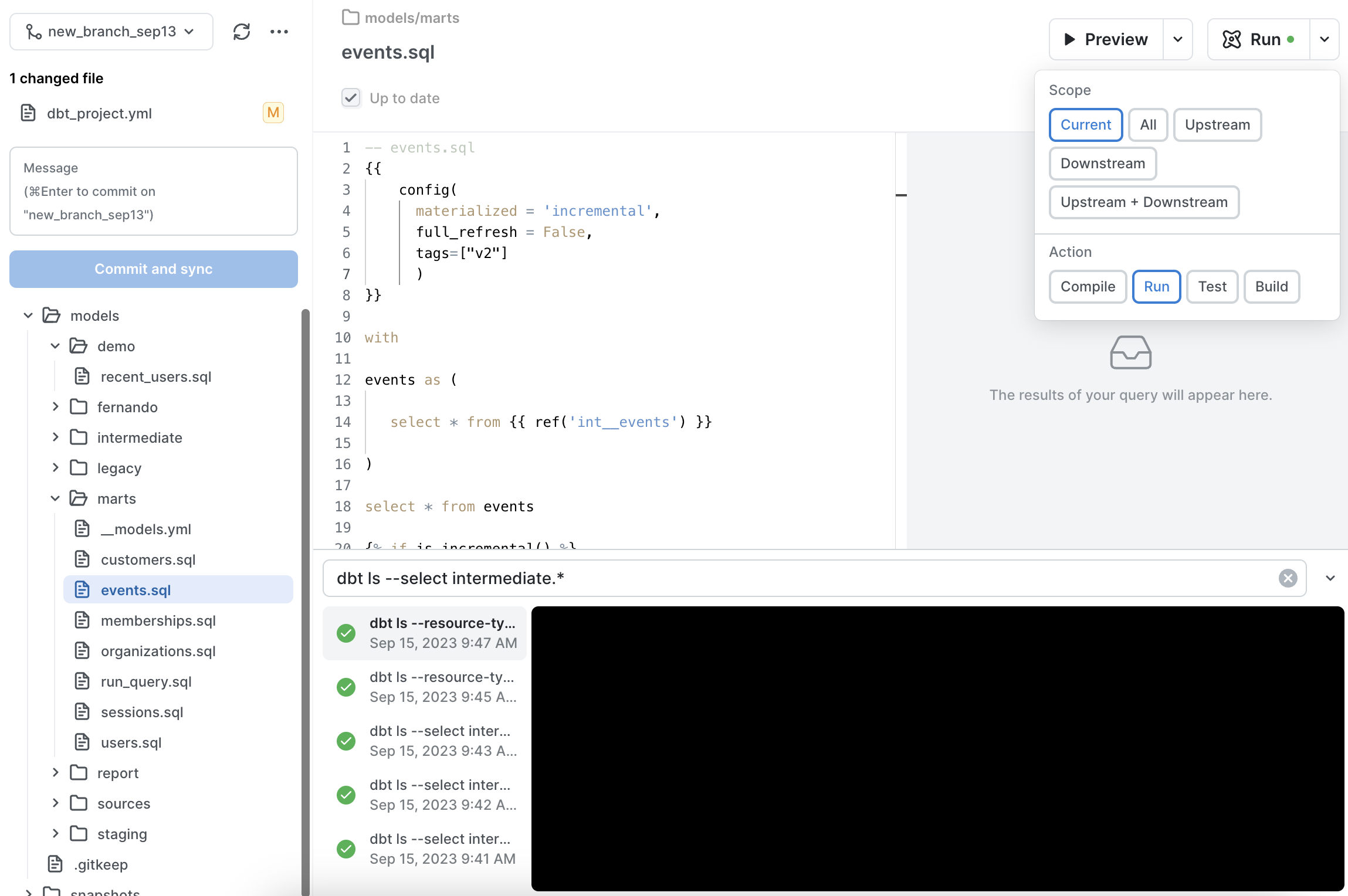dbt CLI Overview & Install
Why dbt CLI?
dbt CLI (Command Line Interface) is the heart of dbt. It allows users to run and manage their dbt projects directly from the command line, offering flexibility and integration capabilities.
Setting Up the dbt CLI
Requirements
- You'll need a dbt project, so if you don't already have one, you can use this template to get things started.
- Install dbt Core locally on your computer, or sign up for PopSQL and connect your dbt project to skip this step.
- If developing locally, you'll also need a code editor. Popular choices include VSCode and Sublime for writing and managing dbt models.
Installation for local development
- Download and install dbt Core from the official website or use package managers like
pip. - Verify the installation by running
dbt --versionin your terminal.
Navigating the CLI
- Use
pwdto check your current directory. - Navigate using
cdand list files withls. - For assistance, use the
-helpflag, e.g.,dbt --helpto view available commands.
These navigation issues aren't really necessary if you're doing your dbt development in PopSQL since you can easily navigate your files using the file explorer. You'll only need the CLI for reading logs and triggering advanced commands that aren't available using PopSQL's dbt action button.

Creating and Managing a dbt Project using the dbt CLI
Starting a New Project
- Use dbt init to create a new dbt project.
- This command generates a directory with essential files and structures for your dbt models, tests, and documentation.
Setting the Working Directory
Ensure you're in the dbt project directory before running any dbt commands. This is crucial for dbt to recognize and manage your project files. If you're using PopSQL, we'll handle this step automatically.
Using the --help Flag
Whenever in doubt, use dbt [command] --help to get a detailed explanation and available options for the command. You can also read through more dbt tutorials here.
Best Practices and Tips
- Always ensure you're in the right directory before running dbt commands.
- Regularly update your dbt CLI to benefit from the latest features and security patches.
- Integrate dbt with CI/CD pipelines for automated testing and deployment, ensuring data quality and consistency.
Conclusion
- The dbt CLI is a powerful tool for modern data teams, allowing for efficient data transformation and modeling directly from the command line.
- With integrations like Spectacles and Keboola, dbt becomes even more versatile, catering to a wide range of data workflows.
- Try out a hosted dbt option like PopSQL to make setup and management easier, especially if you're not familiar with the local software development processes.
Additional Resources
Previous
dbt cleanNext
dbt commands